
Motion under gravity and projectiles (A-level physics)

Motion under gravity
In absence of any resistance, all bodies regardless of their mass fall with same acceleration near the earth’s surface.
Acceleration due to gravity is the rate of change of velocity for freely falling body and it is symbolized as a letter, g. g = 9.81ms2 and it replaces “a” in equation of motion
For a body falling under gravity, g is positive and g is negative for the object moving upwards.
Example 1
A ball is thrown vertically upwards with initial speed 20ms-1. After reaching the maximum height and on the way down it strikes a bird 10m above the ground.
(a) Calculate the highest point reached
u = 20ms-1, g = -9.8ms-1, v = 0
from v2 = u2 + 2as
0 = 202 + 2 x -9.8 x s
The highest distance, s = 20.4m
(b) Calculate the speed at which it strike the bird
u = 0, s = (20.4 -10) = 10.4m, g = 9.8ms-2
from v2 = u2 + 2as
v2 = 02 + 2 x 9.8 x 10.4
v = 14.3ms-1
Example 2
A stone is thrown vertically upwards with a speed of 10ms-1 from a building. If it takes 2.5 seconds to reach the ground, find the height of the building.
Solution
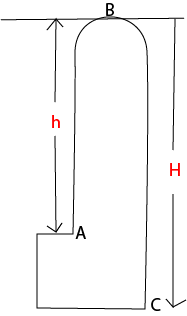
Time taken to move from A to B
v = u -at
0 = 10 – 9.81t; t = 1.02s
Height, h
h = ut – ½ gt2
= 10 x 1.02 – ½ x 9.81 x (1.02)2
= 5.1m
Time taken from B to C = 2.5 – 1.02 =1.48s
Distance, H, u = 0, t = 1.48, g -9.81ms-2
H = 0 x 1.48 + ½ x 9.81 x 1.482
= 10.7m
Height of the building = H – h = 10.7-5.1 = 5.6m
Exercise

2. A motorist travelling at a constant speed of 50 kmh–1 passes a motorcyclist just starting off in the same direction. If the motorcyclists maintains a constant acceleration of 2.8ms-2 calculate;
(i) Time taken by motorcyclist to catch up with the motorist. (9.9s)
(ii) The speed at which the motorcyclist overtakes the motorist.( 27.72ms-1)
(iii) The distance traveled by the motorcyclists before overtaking.(137.2 m)
3. A stone is thrown vertically upwards from a point at a height, h, above the ground level and initial velocity 20ms-1. If the stone, hits the ground, 5s later; find h [Answer 22.625 m]
Projectile
A projectile is anything which is given an initial velocity and left to move on its own in the presence of a constant force field, e.g. gravitation force field. In this case, air resistance is negligible.
Consider a body projected with a speed u at an angle θ to the horizontal
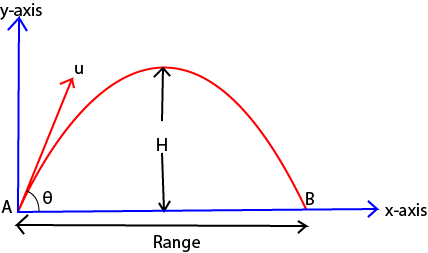
θ = angle of project
A –point of projection
H- maximum height of projection
AB –range
The projection has both vertical and horizontal component which are independent of each other. The acceleration due to gravity for the vertical component is g while that of the horizontal component is zero, that is, the horizontal velocity is constant.
Terminology of projectile
(a) Angle of projection is the angle between the direction of the projection and the horizontal.
(b) Trajectory is the path followed by a projectile
(c) Maximum height, H, is the distance between the highest point reached and the horizontal plane through the point of projection.
(d) Time of flight (T) is the time taken by the projectile or particle to move from its initial position to the final position along its path.
(e) Horizontal range is the distance from the initial to the final position of projection.
Horizontal motion
Horizontal component of velocity is got by


Vertical motion
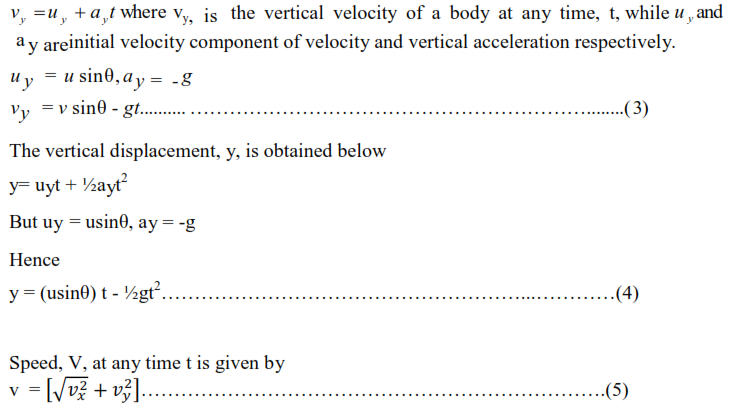

Maximum height, H

Time to reach the maximum heights

Time of flight, T
The time taken by the projectile to move from the point of projection to a point on the plane through the point of projection where the projection lies i.e. time taken to move from A to B.
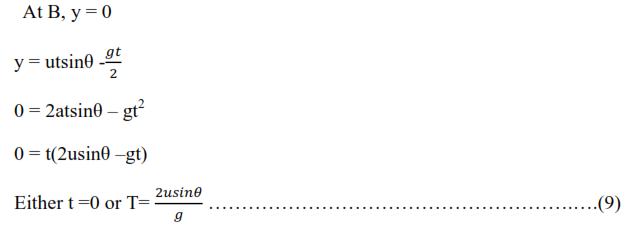
Note: time of flight is twice the time taken to reach the maximum height
Ranges , R:
It is the distance between the point of projection and a point on the plane through the point of projection where the projectile lands i.e. horizontal distance AB.
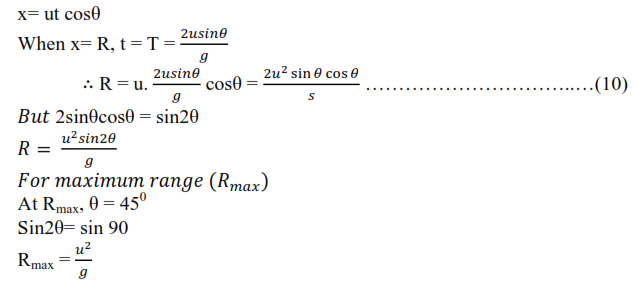
Equation of trajectory
Consider a body project with a speed, u, from the ground and angle θ from horizontal.

Suppose the body passes through a point P(x, y) after time, t.
Consider vertical motion
x = (ucos θ)t
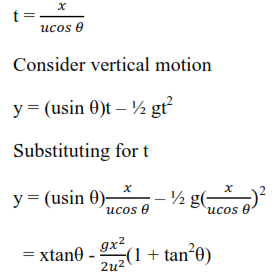
Direction of motion
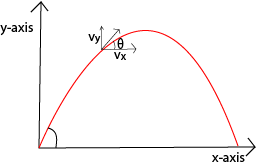
The direction of motion is determined by the direction of velocity of particles at any time, t. and its angle θ to which the velocity makes with the horizontal
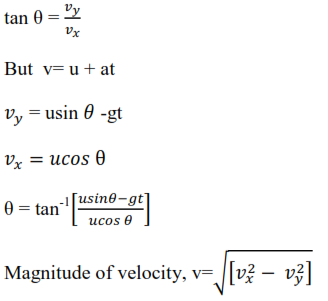
Example 3
A particle is projected at 350 to the horizontal and just clears a wall 12m high and 40m away from the point of projection. Find
(i)The speed of projection
(ii) Velocity of particle when it strikes the wall and time taken to reach the wall.
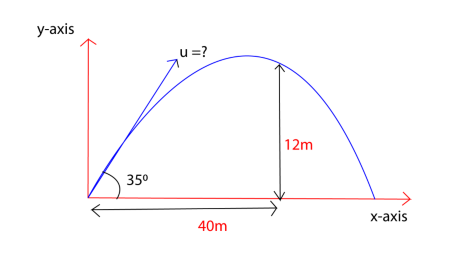
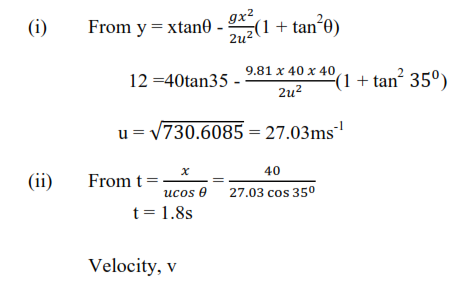
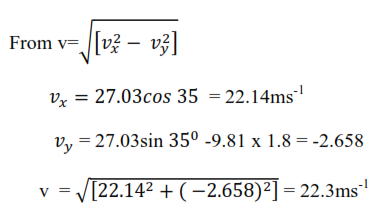
Example 4
A bullet is fired from a gun placed at a height of 200m with a velocity of 150 ms-1 at an angle of 300. Find the
(i) Maximum height attained
(ii) Time taken for the bullet to hit the ground
Solution
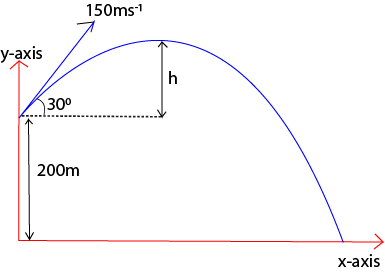
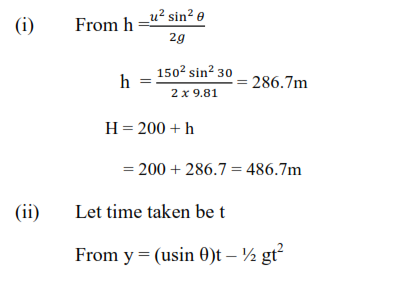

Example 5
An object P is projected upwards from a height 60m above the ground from a height 60m above the ground with a velocity 20m/s at 300 to the horizontal, at the same time an object Q is projected from the ground upwards towards P at 300 to the horizontal. P and Q collided at a height of 60m above the ground. Find
(i) The speed of projection of the object Q.
(ii)The horizontal distance between the point of projection
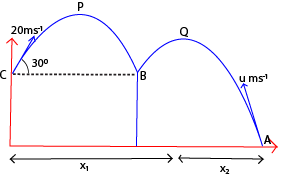
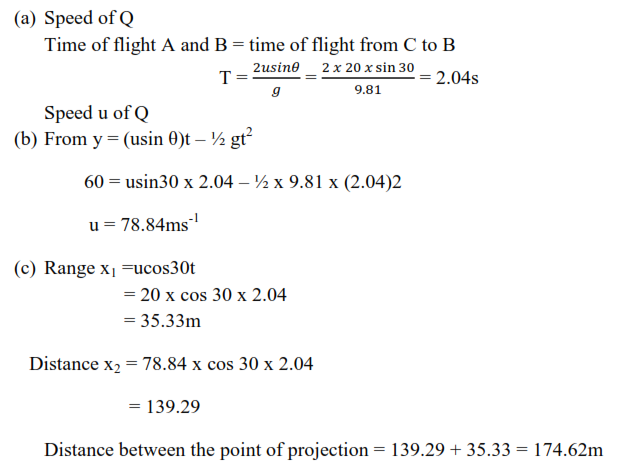
Example 6
Two footballers 120 m apart standing facing each other, one kicks a ball from the ground such that the ball takes off at a velocity 30 ms-1 at 380 to the horizontal. Find the speed at which the second footballer must run towards the first footballer in order to trap the ball as it touches the ground if he starts running at the instant the ball is kicked.
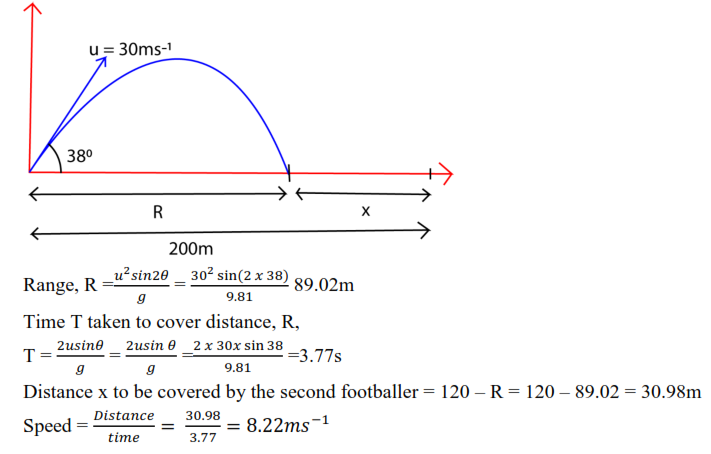
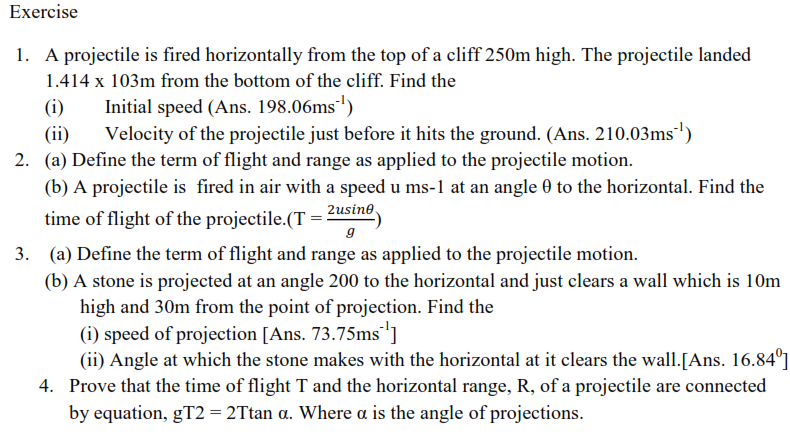
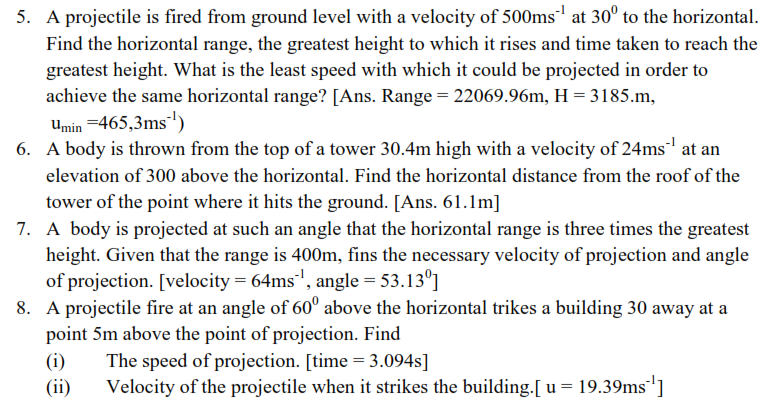

Sponsored by The Science Foundation College + 256 753 80 27 09
Dr Bbosa Science

It works if one had a passionate belief about something.
I’m always impressed by your writing. Home Improvement
Thanks for shedding light on this. Indian Cricket
Study at the Top MBBS Colleges in Gujarat, offering holistic education for medical aspirants.
Learn how MBBS Fees Structure in Himachal Pradesh makes education affordable.
Download now and unlock an amazing gaming experience with the Raja Luck App.
Learn about the role of Raja Luck in modern business.
Unlock daily bonuses and special promotions by participating in Goa Games, designed for both novice and seasoned players.
Sign up with the growing community of winners by utilizing the Diu Win Invite Code.
Guarantee undisturbed efficiency and reputable security with Server Rental in Noida.
Participate in awesome battles and tournaments on bdg win game.
Download the most recent version of the 55 club app for nonstop gaming enjoyable.
Plan your IT jobs effectively with a well-defined IT Roadmap to achieve long-term success.